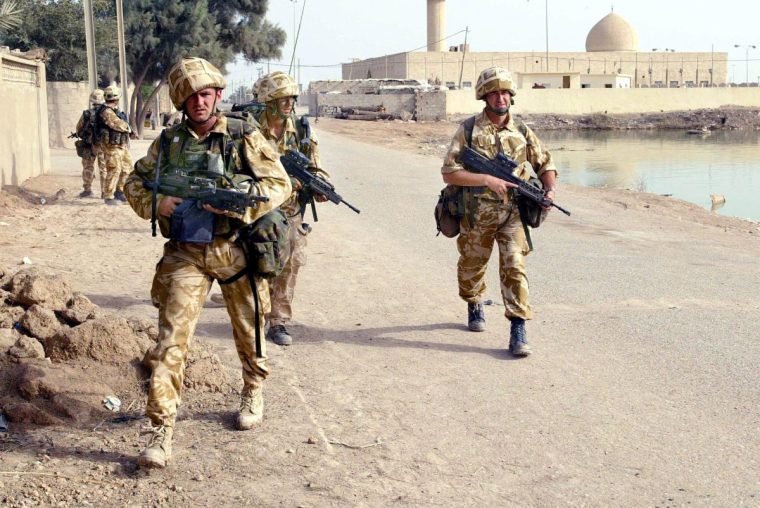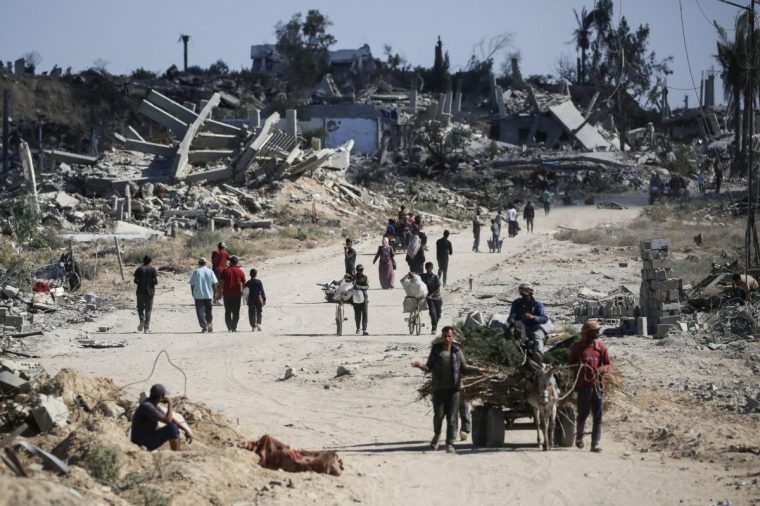One of the big unknowns around the Gaza ceasefire deal is the fate of Hamas’s weaponry
What we all got wrong after the fall of Saddam Hussein in 2003 was to have no plan for what happened next.
The vacuum left by disbanding the Iraqi police force and army was quickly filled by militias, ostensibly funded and directed by Iran, leading to a bloody insurgency which claimed the lives of hundreds of British soldiers and thousands of civilians. This cannot be allowed to happen in Gaza.
Both the United Nations and Donald Trump’s 20-point vision for peace call for an International Stabilisation Force (ISF) to maintain the ceasefire and begin the daunting and complex humanitarian operation of feeding the starving, turning the power and water back on, starting the clear-up, and rebuilding and training a local Palestinian police force to replace Hamas.
Currently, a small US military contingent is setting up a “Civil Military Co-ordination Centre” to get things moving on the security and humanitarian side.
One of the big unknowns around the ceasefire deal is the readiness of Hamas to disarm and hand over its weapons.
In Iraq, I was involved in recovering legacy chemical weapons post-2003. People who handed in sarin rockets and artillery shells with chemical weapons in them were paid a bounty and we blew them up in the desert. It pretty much did the job.

One farmer near Al Amara, north of Basra, turned up regularly with sarin rockets, others accidentally found chemical munitions – there was a lot of ammunition and burned-out military vehicles lying around.
When it comes to the Hamas fighters in Gaza – of which there seem to be a few thousand active ones armed predominately with AK47s, pistols and RPGs – it is very possible that money is the solution. For a few thousand dollars, weapons could be handed in, or elements among the citizenry would dob them in for the cash.
There could also be search-and-destroy operations, but these are complex, time-consuming and very dangerous. It could potentially set the International Stabilisation Force up for failure right from the start. Many weapons will be hidden underground and no doubt some will be booby trapped.
We did these types of operations in Northern Ireland, Iraq and Afghanistan for years and only just scratched the surface. The decommissioning process following this route in Northern Ireland took more than 10 years, and I doubt we have that time in Gaza.
If we want to do this as quickly as possible, hard cash is the most effective method.
At the same time, the weapons coming out of Gaza need to be destroyed by the ISF, or countries like the UK or US, otherwise they could end up in the hands of groups such as Isis, Hezbollah, or the Houthis. In Afghanistan, we saw stolen weapons from the Afghan army used by the Taliban against Coalition forces.

Violence is already erupting in areas of Gaza where Israeli forces have withdrawn, which shows there is a need for a third-party force as soon as possible. First to protect Gazans, second to disarm Hamas, and third to get aid to a starving population.
Once lines are drawn, with perhaps four or five international brigades deployed, as was the case in Kosovo, the humanitarian and reconstruction task can begin in earnest. Whether this force is based out of Egypt or Israel will be a moot point, but it is likely that the massive amounts of initial aid will come through Egypt and across the beaches, as it did last year.
This is where the West, led by the US, should play its part.
I remember being peripherally involved in starting up Pristina Power Station B in Kosovo in 2000, and people literally ringing up mates in the UK power industry to find out which switches to flick. It was members of my current Army unit, the Engineer and Logistics Staff Corps (ELSC) – the best specialist unit nobody has heard of in the British Army – who ultimately did the job.
The ELSC is a group of experts – most with little military experience, but with skills the Ministry of Defence doesn’t usually have, like starting up power stations, and building railways during the Boer War. They give their time pro bono in service of the country.
No doubt there will be cries across Westminster and up and down the country to not get involved in Gaza. But, our expertise, rather than any substantial boots on the ground, could make a significant difference, and hurry ordinary Gazans to the peace they so richly deserve.
This will reduce the instability in the Middle East, which will also help global peace, and allow Trump and Europe to focus on Putin and the war in Ukraine.
Hamish de Bretton-Gordon is a former British Army Officer. His experiences in Kosovo, Iraq, Afghanistan and Syria are described in his memoir Chemical Warrior.
